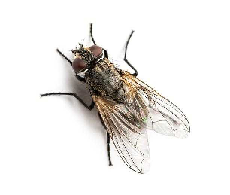Misting in Hot Dry Conditions
Many of you will know Mark Linton from Renovo Chemicals from previous roadshows around the country he is responsible for the manufacturing of the majority KI brand of Insecticides, a few summers ago Mark shared some really great tips on misting in summer conditions and thought it would be great to revisit this article.
The second half of this summer has consisted of hot, dry conditions and we now believe these conditions may be causing some issues with misting applications. Even traditionally humid areas are experiencing a lower than usual humidity, and in the process of warming up during the day, humidity decreases which can compound the problem. Here’s why:
Relative humidity is the amount of water vapour in the air at a given temperature as a percentage of the maximum amount possible. As the temperature increases the maximum amount possible also increases. Air with a temperature of 30°C can hold three times as much water vapour as air with a temperature of 10°C. So for example at 20°C, 50% humidity is 9 grams of water vapour per cubic meter of air whereas at 30°C, 50% humidity is 15 grams of water vapour per cubic meter of air.
If the temperature in the morning is 20°C and the humidity level is 60%, by the time the space warms up to 28°C the humidity level will have dropped to 38%. So what? You may think... The problem comes from the evaporation of water into vapour whenever the relative humidity is below 100% and the lower it is, the faster water will evaporate. This is something we’ve all seen when trying to dry something on a cold day when the relative humidity is usually high. So in the example above, when the space has warmed to 28°C the humidity is 38% and any water will continue to dry until the humidity reaches 100%.
A mister produces spray droplets anywhere from 5µm to 30µm, typically 20µm. With higher temperatures and lower humidity described above, spray droplets of this size will dry very quickly because the surface area is so large compared to the volume (a topic for another newsletter). When this occurs, there is a chance that the spray droplet will have completely dried, leaving a small dust-like particle of active ingredient floating in the air which will bounce off the wall, instead of sticking to it. It is also believed that the spray droplet won’t need to dry completely for this bounce effect to occur and the presence of some remaining water around it won’t cause it to stick to the surface. The end result will still be a particle of active ingredient floating in the air or settling.
If there is very little wind then venting the house, the ventilating may not be sufficient to remove these dust like particles of active ingredient floating in the air and they are likely to cause immediate paraesthesia when the home owner walks back into their premises. When you consider the typical active chemical particle size in a Suspension Concentrate is 5-10µm when in a 20µm water droplet, makes it is even easier for the droplet to dry.
Some more numbers as an example. A 100m² indoor area with a 2.4m stud is a volume of 240m³. If using the above numbers of 38% humidity at 28°C, it would take 3.5 L of water to increase the humidity to 90%. A typical amount applied from a mister over this area would be 2 L so it could easily all evaporate without coming close to 90% humidity.

